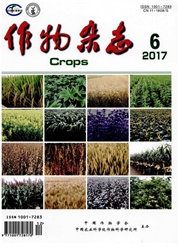

 中文摘要:
中文摘要:
基于不同熟性棉花品种的异地分期播种和施氮量试验,运用异速生长模型分析棉籽氮浓度与棉籽生物量间的关系,建立氮素的潜在增长模型,进而综合品种特性、主要气象条件(温度、太阳辐射)和栽培措施(施氮量)等因子,建立基于异速生长关系的棉籽蛋白质含量模拟模型。利用不同生态点品种、播期和施氮量的田间试验资料的检验结果表明:安阳、淮安和徐州试点模拟值与实测值的根均方差(RMSE)分别为2.2%、4.1%和2.3%。说明依据棉籽蛋白质含量与生物量间的异速生长关系模拟棉籽蛋白质形成切实可行,模型预测性好,广适性强。模型的不足在于其精确度受棉籽干物质累积模型和棉铃对位叶N浓度模型的影响较大。
 英文摘要:
英文摘要:
Simulation of cottonseed(Gossypium hirsutum L.) quality is an area of great uncertainty.Allometry model is a general method in modeling crop growth regulation.Our objective was to simulate the formation of cottonseed protein by allometry growth relationship between the change of cottonseed protein content and the biomass accumulation.A set of field experiments were conducted in the lower reaches of Yangtze River Valley(Nanjing,Huaian) and the Yellow River Valley(Xuzhou,Anyang) in 2005,where two varieties were selected,two sowing dates and three N rates were set.According to the data collected in Nanjing,a simulation model of cottonseed protein content was developed based on allometry method,and the response of cottonseed protein content to weather conditions(temperature,solar radiation),crop management variables(precisely N supply) were all quantified.The parameters in the model were calibrated using the field data obtained in Nanjing.The model was tested using an independent field data obtained in Huaian,Xuzhou and Anyang.The results showed that the model was sufficiently robust to accurately predict cottonseed protein content in Huaian,Xuzhou,and Anyang with the RMSEs of 2.2%,4.1%,and 2.3%,respectively.
 同期刊论文项目
同期刊论文项目
 同项目期刊论文
同项目期刊论文
 期刊信息
期刊信息
